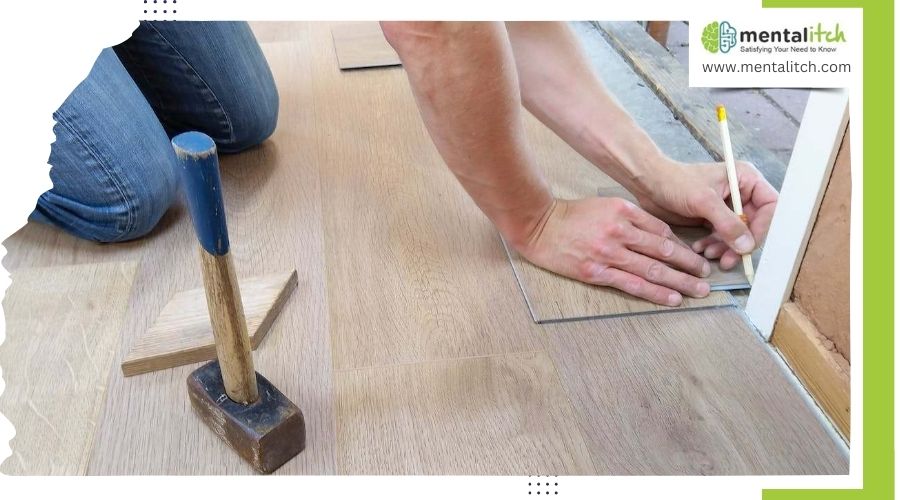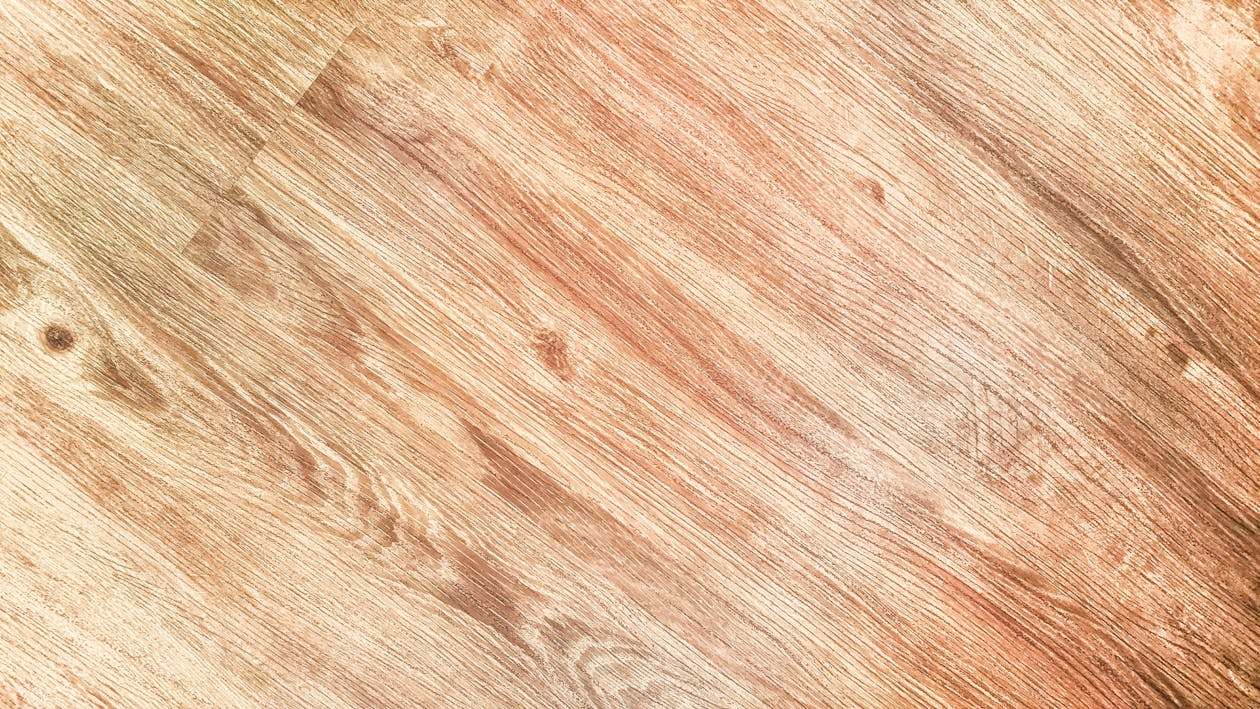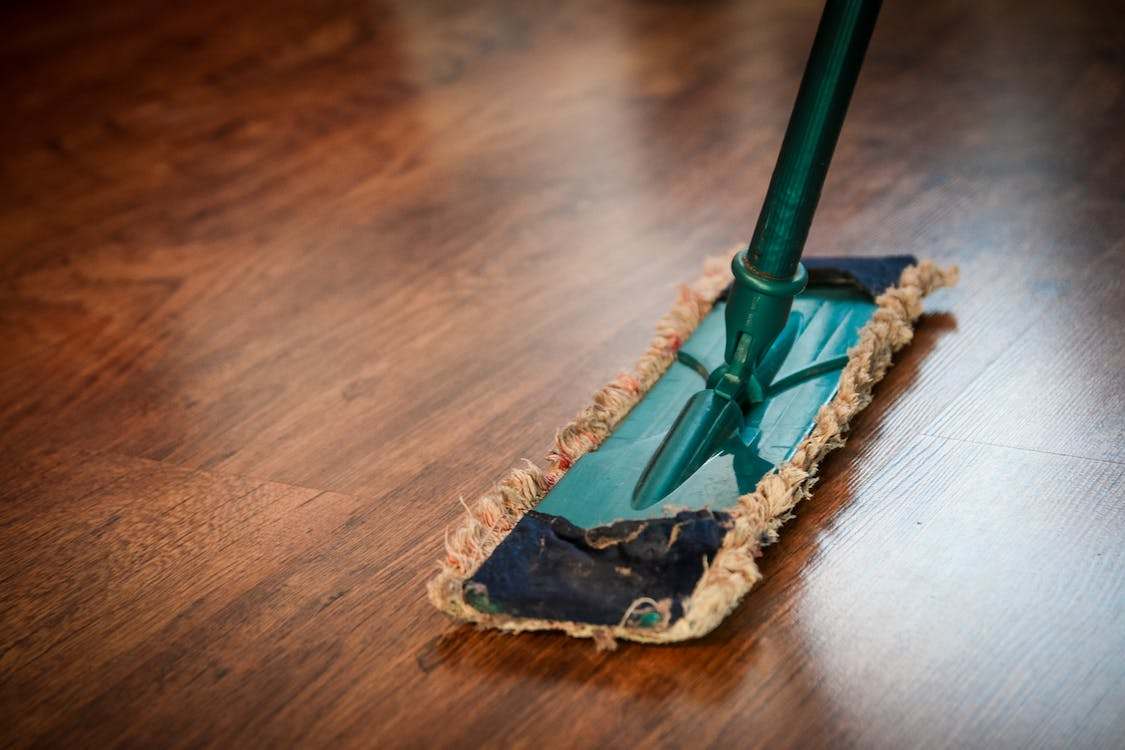Choosing the right flooring for your home is a crucial decision that affects both the functionality and aesthetic appeal of your living space. From hardwood and tile to carpet and laminate, the options are vast, each offering its unique benefits and challenges. This guide aims to simplify the process by providing you with essential information on the various types of flooring available, their pros and cons, and tips for making the best choice to suit your lifestyle and decor preferences.
What are the Different Types of Flooring?
Each type of flooring comes with its unique set of properties, advantages, and disadvantages, catering to different needs and preferences. Here’s a closer look at some of the most popular flooring types:
Hardwood Flooring
Hardwood flooring is renowned for its natural beauty, durability, and ability to add value to any home. Made from harvested trees such as oak, maple, and walnut, hardwood offers a variety of shades, textures, and finishes that can suit any decor style, from traditional to modern. Its natural patterns bring a warm and inviting feel to spaces, making it a preferred choice for living areas and bedrooms.
However, hardwood flooring requires a significant investment upfront and can be susceptible to scratches, dents, and moisture damage. It may require refinishing every few years to restore its original luster, adding to its maintenance cost. Despite these drawbacks, hardwood’s timeless appeal and long lifespan make it a popular choice for homeowners looking for a long-term flooring solution.
Laminate Flooring
Laminate flooring provides a cost-effective alternative to hardwood, offering the look of real wood without the high price tag. It’s constructed from several layers, including a durable wear layer and a photographic applique layer, which simulates the appearance of wood or stone. Laminate is easy to install, often featuring a click-lock design that allows for floating installation without the need for nails or glue.
While laminate is resistant to scratches and easy to clean, it’s not as durable as real hardwood and can be damaged by excessive moisture. Its inability to be sanded or refinished means that once it’s worn out, it must be completely replaced. Nevertheless, laminate flooring remains a popular choice for its affordability, wide range of styles, and ease of maintenance.
Ceramic Tile Flooring
Ceramic tile flooring is a versatile and durable option suitable for various areas of the home, including kitchens, bathrooms, and entryways. Made from clay that’s fired in a kiln, ceramic tiles can be glazed or unglazed and come in an array of colors, patterns, and sizes. This type of flooring is known for its resistance to moisture, stains, and wear, making it an ideal choice for high-traffic and wet areas.
The main disadvantages of ceramic tile include its hard and cold surface, which may require rugs or heating systems for added comfort. Installation can be labor-intensive and requires precise cutting and laying. However, with proper installation and care, ceramic tile flooring can last for decades, offering a timeless and practical solution for many homeowners.
Vinyl Flooring
Vinyl flooring has gained popularity for its resilience, water resistance, and versatility. Available in sheets, tiles, or planks, vinyl flooring can mimic the look of wood, stone, or ceramic tiles at a fraction of the cost. It’s soft underfoot and can withstand heavy traffic, spills, and moisture, making it ideal for kitchens, bathrooms, and basements.
One of the drawbacks of vinyl flooring is that it can be prone to gouging from sharp objects and can fade when exposed to direct sunlight over time. Some vinyl products may also release volatile organic compounds (VOCs), raising concerns about indoor air quality. However, newer low-VOC options are available, making vinyl a more attractive and safer choice for many households.
Carpet Flooring
Carpet flooring offers unmatched softness and warmth, making it a favorite for bedrooms and living rooms. It provides sound insulation and comfort and comes in a vast array of colors, textures, and materials. Carpet can also trap allergens and dust, which can be removed with regular vacuuming, contributing to improved indoor air quality.
On the downside, carpets are susceptible to stains, spills, and wear, especially in high-traffic areas. It requires regular deep cleaning to maintain its appearance and may need to be replaced every few years, depending on the quality and usage. Despite these maintenance requirements, carpet remains a popular choice for its coziness and ability to make a space feel homier.
Tips for Choosing a Flooring
Selecting the right flooring for your home is more than just finding a style you like; it’s about matching your lifestyle, budget, and the functional needs of each room. With a variety of materials available, each offering its unique benefits and challenges, making the right choice can seem daunting. Here are some tips to help you navigate through the options and select the flooring that best suits your home:
- Consider Your Lifestyle: Think about how each room is used. High-traffic areas like living rooms and entryways may need more durable flooring, such as tile or hardwood, while bedrooms may benefit from the warmth and comfort of carpet.
- Keep Your Budget in Mind: Flooring can vary widely in cost, not just for the materials themselves but also for installation. Set a realistic budget that considers both upfront costs and long-term maintenance.
- Think About Maintenance: Different flooring types require different levels of upkeep. Consider how much time you’re willing to dedicate to cleaning and maintenance. For example, hardwood floors may require refinishing, whereas vinyl or laminate might only need regular sweeping and mopping.
- Assess the Room’s Moisture Level: Some flooring options, like hardwood, are not suitable for high-moisture areas such as bathrooms and basements. In these spaces, consider water-resistant options like tile or vinyl.
- Factor in Installation: Some flooring options can be installed as a DIY project, while others may require professional installation. Consider the complexity of the installation process and whether it fits into your budget and skill set.
- Don’t Forget Comfort and Noise: Comfort is crucial, especially in rooms where you spend a lot of time standing. Soft flooring like carpet or cork can be easier on your feet. Also, consider the noise level; hard surfaces can amplify sounds, while softer materials can help absorb noise.
- Look at Longevity and Resale Value: Some flooring options, like hardwood, can last for decades and add to your home’s resale value, while others may need to be replaced more frequently. Consider how long you plan to stay in your home and whether you’re looking for a long-term investment.
- Sample Your Options: Before making a final decision, bring home samples of flooring materials to see how they look in your space and under your lighting. This can also help you see how the flooring looks with your furniture and home decor.
Tips for Maintaining Your Home’s Flooring
Maintaining your home flooring is key to ensuring its longevity and preserving its appearance over time. Different types of flooring require different care strategies, but there are universal tips that apply to keeping any flooring in top condition. Here’s a guide to help you protect your investment and keep your floors looking their best:
- Regular Cleaning: Keep your floors clean by sweeping, vacuuming, or mopping regularly. This prevents dirt and grit from scratching the surface and allows your flooring to maintain its shine and finish. Use cleaning products recommended for your specific type of flooring to avoid damage.
- Immediate Spill Cleanup: Spills should be cleaned up immediately to prevent staining, especially on carpet and porous materials like natural stone. Blot spills gently instead of rubbing to avoid pushing the spill deeper into the material.
- Use Doormats and Rugs: Place doormats at every entrance to reduce the amount of dirt and moisture tracked onto your floors. Area rugs can be used in high-traffic areas to minimize wear and tear on the flooring underneath.
- Furniture Protectors: Use felt pads or protective caps on the legs of furniture to prevent scratches and dents on hard surfaces. Be cautious when moving heavy furniture, and consider using furniture sliders to avoid damage to the flooring.
- Avoid Excessive Water: When mopping, use a damp mop rather than a wet one, especially on wood and laminate floors, to prevent water damage. Ensure that any spills are dried promptly.
- Manage Sun Exposure: Prolonged exposure to sunlight can fade and discolor flooring materials. Use curtains, blinds, or UV-protective window films to control the amount of sunlight that hits your floors.
- Regular Inspection: Check your floors regularly for signs of wear or damage, such as cracks, chips, or loose planks. Early detection can prevent minor issues from becoming major problems.
- Professional Cleaning: Consider having your floors professionally cleaned periodically. This is especially important for carpets, which can benefit from deep cleaning, and for tile and grout, which may require specialized cleaning to remove embedded dirt.
- Follow Manufacturer’s Guidelines: Always refer to the care and maintenance guidelines provided by the manufacturer. These recommendations are tailored to the specific needs of the flooring material and can help you avoid common maintenance mistakes.
By following these simple tips, you can maintain the beauty and durability of your home flooring, regardless of the type. Regular care not only keeps your floors looking their best but also contributes to a cleaner, healthier living environment.
Conclusion
Whether you’re drawn to the warmth and character of hardwood, the durability and versatility of tile, the comfort of carpet, or the affordability and ease of maintenance of vinyl and laminate, there’s a flooring option out there that’s perfect for your space. By understanding the properties, pros, and cons of each type of flooring, you can choose the perfect flooring that not only enhances the beauty and functionality of your home but also stands the test of time.
Additional Suggestions
- A strong and resilient type of flooring that is also made from natural, eco-friendly materials is Linoleum.
- Cork flooring adds a youthful and cozy feeling to your place.
- About 75% of homeowners were reported to have carpets in their houses.
- More than 50% of Americans have hardwood floors in their homes, and that number is expected to continue increasing.
- As long as you work with a reputable installation company that uses the right flooring nailer to put down your floors, your home’s flooring will be installed properly
- The average person spends almost 90% of their time indoors, which is why the interior of the home should always be prioritized for comfort.
- Most hardwood floors will last you for at least 25 years, with certain wood floors lasting over a century in some cases.
- Most realtors will tell you that you can get up to an 80% return on investment when you install wood floors.
- You can use vinyl plank flooring for cold temperatures.
- If you plan to have vinyl tiles in your home, you should choose high-quality vinyl tiles that will last longer.
- Though there are flooring alternatives, nothing can be compared to hardwood flooring in terms of elegance.
- You can also consult the floor sanding Essex experts to remove top surfaces of a wooden floor professionally and then to know which type of flooring suits best for your home or commercial property.
- Carpeting manufacturers have improved their quality, as some modern carpets now come with stain-resistant features.
- Garage floor tiles are available in various materials such as PVC, rubber, and polypropylene.
- Harvested from the bark of the cork oak tree, cork is a renewable and biodegradable material and is one of the most underrated materials for furniture and flooring.
- Hardwood or engineered wood flooring provides a warm and inviting atmosphere, which is why they are perfect for living rooms.
- If there is a place in your home where hardwood flooring meets carpet and then tile, it may be best to add decorative area rugs to soften the look of transitioning floors in lower-traffic rooms.
- To get all the priorities right when it comes to flooring, it is recommended to seek help from tile floor installationcompanies.
- Choosing from a selection of flooring should always be done more carefully, as changing them after having them installed can be time-consuming and expensive.
- You will need to make sure your carpets are cleaned at least once a year (you can purchase a carpet cleaner to do it yourself). In addition, you should also vacuum regularly, but make sure the vacuum setting isn’t too harsh on the fabric.
- You may need to call a specialist in limestone restoration to keep your limestone floors looking good.
- You can choose various patterns, such as tile or wood effects, if you still want continuous patterns on the floor.
- You can also use travertine tiles in your home for a different look.
- To maintain the appearance of the flooring, clean them thoroughly to remove any particles of dust or debris.
- Hardwood floors benefit from regular cleaning to maintain their beauty and longevity.
- If you have pets, ensure their nails are regularly trimmed to prevent them from scratching the hardwood floors.
- Shop large area rugs to provide protection to any floor space.
- When it comes to selecting the perfect flooring for your home, engineered hardwood flooring is a popular option.
- High-quality plywood or fiberboard can also be a good flooring option.
- Engineered hardwood flooring is available in a variety of installation options, providing flexibility and ease of installation.
Elevate your space to new heights by exploring the unparalleled sophistication of these exquisite flooring solutions. Click here to learn more.






